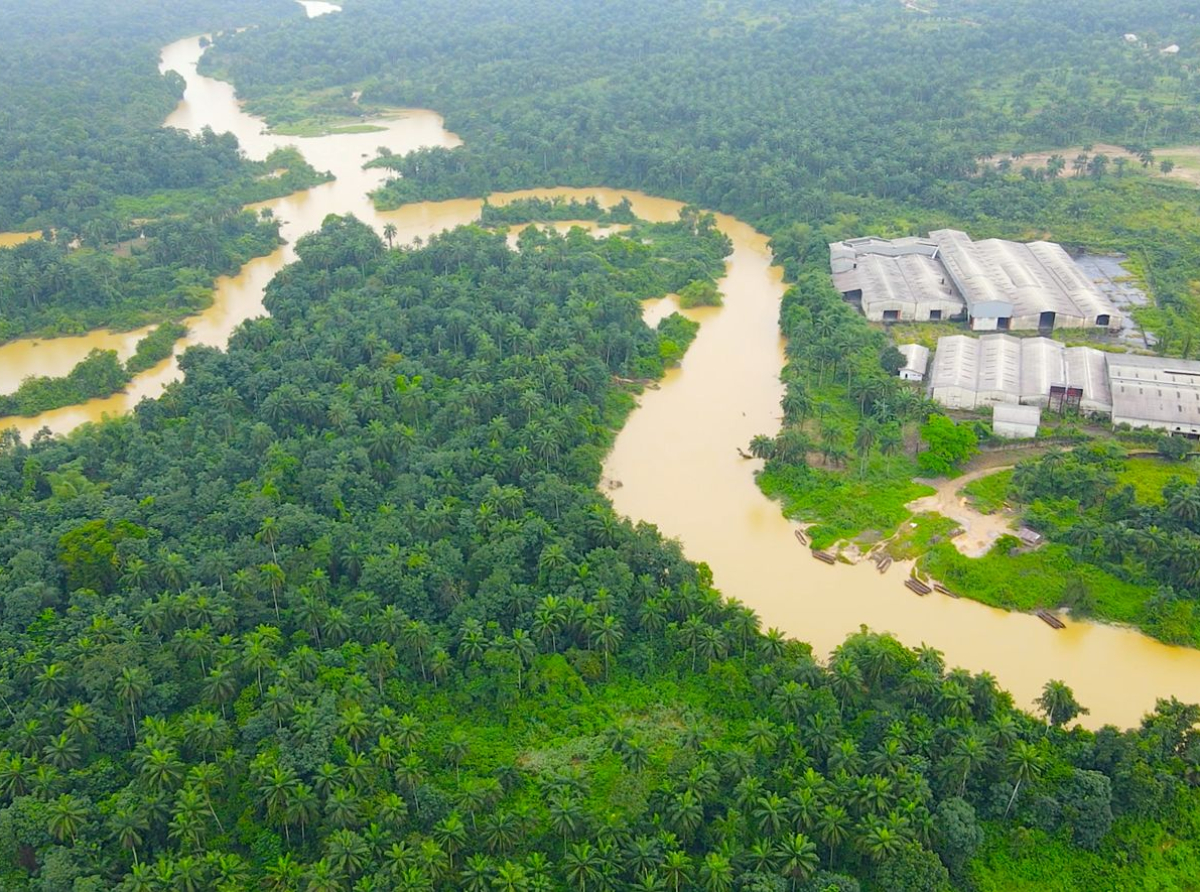
Africa's coastal forest otherwise known as the mangroves are rarely regarded as a valuable ecosystem, majority of the people view
them as wasteland or dirty areas that should be converted into fanciful sandy beaches or luxurious resorts and apartments. 20 percent of the World's mangroves are within 34 African countries possessing these coastal forests. East Africa possesses 26 percent of the mangroves in Africa while the remaining 76 percent are in West Africa.
Nigeria is believed to have the largest mangrove ecosystem in Africa, the Cross-River estuary mangrove in Cross-River State is regarded as the most important in Nigeria because it serves the indigenous fishing communities in that area. The fishing communities have over the years harvested the estuary mangrove for firewood used for both domestic purpose and for smoking fishes. Wood sourced from the mangrove forest is also used in building houses, for scaffolding and as fishing stakes. At the end, these activities have degraded the mangrove ecosystem in Cross State.
Nigeria also has large sprawling mangroves in the thick of the Niger Delta, where there have been extreme crude oil exploration activities over the past 50 years. Five mangroves species are found in this region, including, the red mangroves (Rhizophora), the white mangroves (Avicennia germinans and Laguncularia racemose), and an introduced species, Nypa fruticans.
In East Africa, there is the Rufiji delta, which is the largest continuous block of estuarine mangrove forests in Africa and is just one of the areas at risk from sea level rise. Most of the mangroves in East Africa are found in Mozambique, Tanzania, Kenya and southern Somalia. The mangroves ecoregion in East Africa are very productive. They often function as nutrients to adjoining rivers and provide refuge for important species such as crabs, fish, invertebrates, molluscs, plants and shrimps.
Interestingly, there are a number of mangroves found across Africa- the Muni Estuary and Como River in Gabon, Pongara National Park in Gabon, the Douala Edea Faunal Reserve in Cameroon, the Anlo-Keta Lagoon Complex and Songor Biosphere reserve in Ghana, Apoi Creek Ramsar Site in Nigeria, Mida Creek and the Lamu Archipelago in Kenya, the Zambezi River Delta in Mozambique and the Estuario del Muni Natural Reserve in Equatorial Guinea.
Mangroves are the survival sites for birds, crustaceans, fish, mammals, reptiles and shellfish. They are of high economic value to African communities because they are relied on for charcoal, fuelwood, fish smoking and traps as well as timber and medicine. But mangroves are far more important to the Earth and humans- these coastal forests protect the ecosystem of their nearby communities. They reduce erosion and absorb storm/ surge impacts like hurricanes. Agriculturally, the dense roots of mangroves help in binding and building the soils of communities where they are located.
The mangroves once under right condition and protection serve four major purposes to man. They store carbon from the atmosphere and protect the Earth from extreme weather and disasters. The mangroves are also a haven for threatened animals, over the years they have been a source of food security too. Amazingly, in the face of degradation or deforestation if rightly conserved, the mangrove would always bounce back naturally.
No wonder, oceanographer and Chief, Marine and Freshwater at the United Nations Environment Programme (UNEP), Leticia Carvalho, highlighted how remarkable and important the mangroves are to the ecosystem "in tandem with other marine ecosystems.
“Mangroves are a remarkably diverse and important ecosystem that works in tandem with other marine ecosystems including seagrass beds and coral reefs all of which are essential not only for the health of our ocean, coasts and the biodiversity that they support, but for the wellbeing of humans. We also need to protect and restore our mangroves as they are an important habitat and source of food supplies for many indigenous peoples and local communities around the globe,” Carvalho said.
Coastal forests need to be protected, they are vulnerable to human activities especially coastal development, which seems to be the main driver of the loss of coastal forests. Mangrove forests are usually cleared to pave way for buildings and at times, fish farms which are now in vogue in Nigeria. More human activities lead to mangrove erosion and destruction- dredging, sand/land filling and water pollution from chemical agents also referred to weed killers. Worse is that when mangrove forests are destroyed to make way for buildings or other massive structures, a huge amount of carbon dioxide is released into the atmosphere thereby increasing the danger of climate change.
Against all odds, mangroves have quite a lifespan. Most species live for 20 years or longer. Research also suggests that the red mangroves (Rhizophora mangle) can live for between 50 and over 100 years.
As the Nature Conservancy (TNC) Marine Conservation Manager, Anne Birch, rightly puts it "mangroves are magical, they are magical forests where we discover nature’s secrets. They straddle the connection between land and sea and nature and humans. Mangrove forests nurture our estuaries and fuel our nature-based economies.”
Restoring or bringing back lost mangroves is a major talking point in the fight against climate change all around the world. Africa experiences a loss of 2 percent of its mangroves annually and in the last 20 years, there have been a loss of 35 percent. Unfortunately, Nigeria's mangroves are rated among the worst degraded in the World.
Mangroves store gigatonnes of carbon and new strategies are beginning to emerge to help regenerate their habitat and conserve existing ones in line with the UN Decade Ecosystem Restoration 2021-2030. Restoration initiatives have been hinged on understanding the importance of mangroves, reasons for their loss, making sustainable choices, planting new mangroves by involving local communities as well as selecting native seedlings and advocating how mangroves contributes to the existence of mankind.
Mangroves need to be studied and protected especially now that Africa is beginning to pay attention to its Blue Economy.


